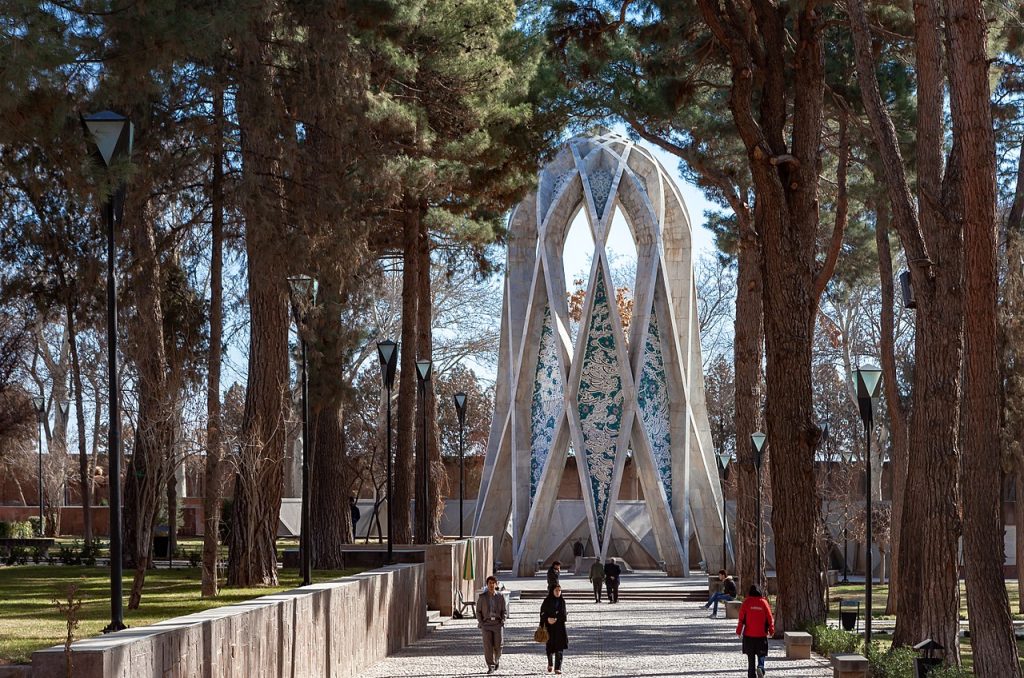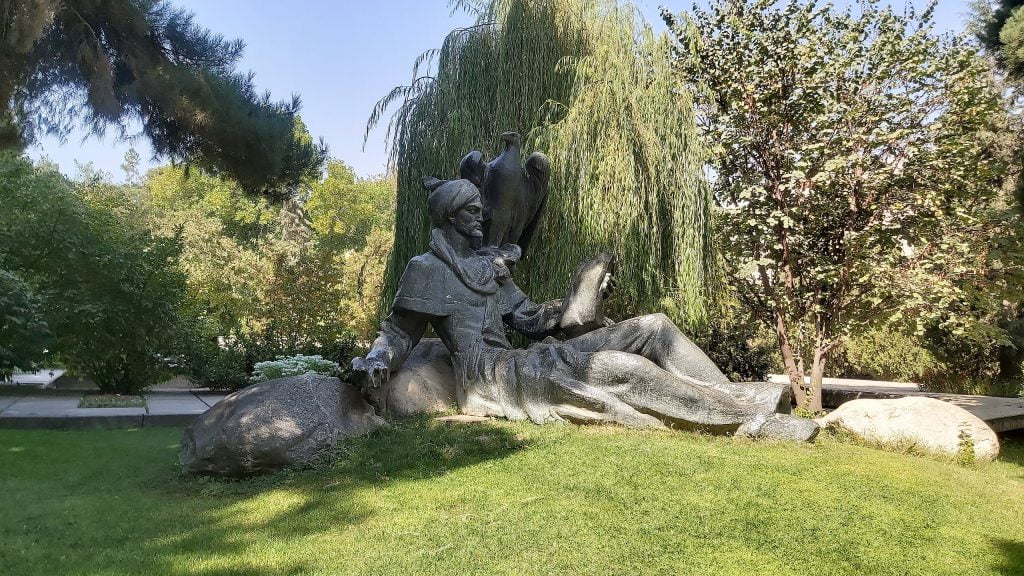The authorship of many poems attributed to the famous Persian poet is oftenraises doubts. We checked to what extent such suspicions are justified.
Academic edition "Rubayat" Omar Khayyam, which was prepared by domestic Iranian scholars Aliyev and Osmanov and published in 1959, contains originals and translations of 293 rubai. IN publication French orientalist Nicolas (1867) - 464 quatrains. IN one of the publications the translation by Edward Fitzgerald, the Victorian poet who brought Khayyam world fame, contains 74 rubai (this number varies from edition to edition). "Wikipedia" leads information about belonging to Khayyam from 300 to 500 rubai. In various editions of poetic translations into Russian one can find up to a thousand quatrains (for example, in publication from the 1986 Poet's Library series - 817, as well as 101 from Fitzgerald's translations) with the caveat that such publications may include translations of the same rubaiyat by different translators. According to some scholars, Khayyam is credited with composing about 5,000 quatrains.
Omar Khayyam (1048–1131) was an outstanding encyclopedist, author of works on algebra and astronomy. In 1074, he was invited to Isfahan, the capital of the Seljuk Sultanate, where he served at the court of the ruler Malik Shah. Khayyam led the work of a group of scientists who were engaged in clarifying the calendar, which was named after his ruling patron. Khayyam is also credited with the authorship of the Rubaiyat, a collection of rubaiyat (quatrains), the shortest form of classical Persian poetry. Rubai (mainly of philosophical content) are present in diwans (collections of poetic works) of a large part of Persian poets - apparently, this small poetic form was better suited than others for composing short impromptu, small poems “on occasion”.
The question of the authenticity of the poetic heritage of Omar Khayyam that has come down to us was first raised by the Russian Iranian scholar Valentin Zhukovsky. In his article In 1897, he demonstrated that some quatrains from Nicolas's edition can be found in the divans of other Persian poets. Zhukovsky identified 82 such rubai and called them “wandering”, and also proposed that only those quatrains attributed to Khayyam in ancient historical works be considered authentic. There were six such poems. Edward Denison Ross not only translated Zhukovsky’s article into English, but also in the course of independent research increased the number of “wandering” rubai.
Zhukovsky's skepticism initially divided Danish orientalist Arthur Christensen, who attributed only 12 rubai to Khayyam, but then he changed his opinion and settled on the number 121. In 1898 was published text of the Rubaiyat based on a manuscript from the Bodleian Library at Oxford University dating from 1460. This manuscript contained 158 rubai, however, its publisher Edward Chiron-Allen rather criticized Fitzgerald's approach to working with the originals, rather than raising the question of the authenticity of certain quatrains. The peak of the study of “wandering” rubai was Job Indian scientist Swami Govinda Tirtha, published in 1941. He found that out of 2213 quatrains attributed to Khayyam, 753 were “wandering.” This method was criticized by the Iranian scientist Ali Dashti, who thought, that the mere presence of rubai attributed to Khayyam in the diwan of another poet does not at all indicate their inauthenticity.

A new approach to determining the authenticity of Khayyam’s poetic heritage suggested in his Persian edition of the Rubaiyat, the German diplomat and orientalist Friedrich Rosen. He believed that it was necessary to identify the key quatrains and, starting from them, verify all other rubai. Rosen identified 23 key quatrains, believing that they should become the starting point for assessing Khayyam's entire poetic heritage. The Iranians made their calculations using this method. Sadegh Hedayat and Muhammad Ali Furugi. Furugi, in particular, called 66 quatrains key, however, such a methodology was criticized — among those defined as “key” rubai, there could well be both authentic ones and those attributed to Khayyam.
Attempts have been made to verify Khayyam's quatrains based on the method of rhyming. Contrary to popular belief, there are two rhyme schemes for the Rubaiyat. The first, considered "signature", is the scheme in which the first, second and fourth lines rhyme (aaba). According to the second scheme, all lines rhyme (ahhh). Iranian scientist Seyyed Ali Mirafzali analyzed 2399 rubai of Khayyam’s contemporaries and found that 87% of them rhyme according to the second scheme (ahhh), and the rest - according to the first (aaba). To similar conclusions came and the British Iranian scholar Lawrence Paul Elwell-Sutton: his study of the quatrains of the 11th century poets showed a 70 to 30 ratio in favor of the second scheme. Applying such a method to Khayyam’s heritage can only narrow the search area, but will not bring tangible results. Thus, in one of the authoritative collections of rubai called “Tarab-khane” (Persian “House of Joy”), containing 559 quatrains, only 112 rhyme according to the pattern ahhh.
There are radical theories whose authors try to explain the problems associated with the attribution of Khayyam’s poetry. Such, for example, is the theory of the “two Khayyams,” according to which we must distinguish between the mathematician and astronomer Omar Khayyam from the city of Nishapur and a poet from the same region who used the poetic pseudonym Khayyam. Let us immediately note that the presence of poetic pseudonyms or literary names is a common occurrence for classical Persian and neighboring literary traditions. We know Shams-ad-Din Muhammad Shirazi by his pseudonym Hafiz, and Muslih-ad-Din Abdallah Shirazi by his pseudonym Saadi. So, the Iranian scientist Muhammad Mukhit Tabatabai, the author of the theory of “two Khayyams,” referring to information from one of the medieval biographical dictionaries, claimedthat the poems of Omar Khayyam actually belong to the poet Ali Khayyam. Data about this Khayyam is only available in the same biographical dictionary to which the author of the theory refers: Ali Khayyam was a famous poet in his time, lived in the same region as Omar Khayyam, and left behind an impressive divan of poetry. Since there is no other confirmation of this theory, and there is enough material to refute it, it is not possible to prove its scientific value.

The task of researchers is further complicated by the fact that we do not have at our disposal relatively early manuscripts of the Rubaiyat. Individual rubai of Khayyam are quoted in works compiled several decades after his death. In anthologies of the second half of the 13th century, selections of his quatrains are mentioned. The earliest manuscripts available to scholars date back to the 15th century - these are the above-mentioned manuscript from the Bodleian Library and Tarab Khane. Already in the example of these two collections, we see the growth of the quatrains attributed to Khayyam: if in the Bodleian manuscript there are about 150 of them, then in the Tarab Khan there are 559. Since the end of the 15th century, not only the number of manuscripts has increased, but also their volume. On this front of research, a breakthrough can only occur if a more ancient (and ideally intravital) manuscript of the Rubaiyat can be discovered in numerous repositories and collections.
So far, this riddle does not have a clear solution. The only thing that scientists can do is to combine all available methods for verifying rubai, that is, determining their authenticity both from the point of view of the most common rhyme scheme of that era, and by eliminating the “wandering” rubai. There are also verification hypotheses based on work with the thematic repertoire of quatrains, although such research is quite often criticized as “taste” of their authors. Therefore, for the time being, it is with bitterness that we have to admit that Elwell-Sutton was right when he said that Persian literature, one of the richest in the world, became famous thanks to someone who, perhaps, did not write a single line.
Half-truth
- N. Chalisova. What did Omar Khayyam say? (about the history of Russian translations)
- Omar Khayyam. Rubaiyat. Preparation of the text, translation and preface by R. M. Aliev and M.-N. Osmanova. M., 1959
- R. Malkovich. Omar Khayyam: Rubaiyat. Comparison of translations. St. Petersburg, 2012
If you find a spelling or grammatical error, please let us know by highlighting the error text and clicking Ctrl+Enter.







